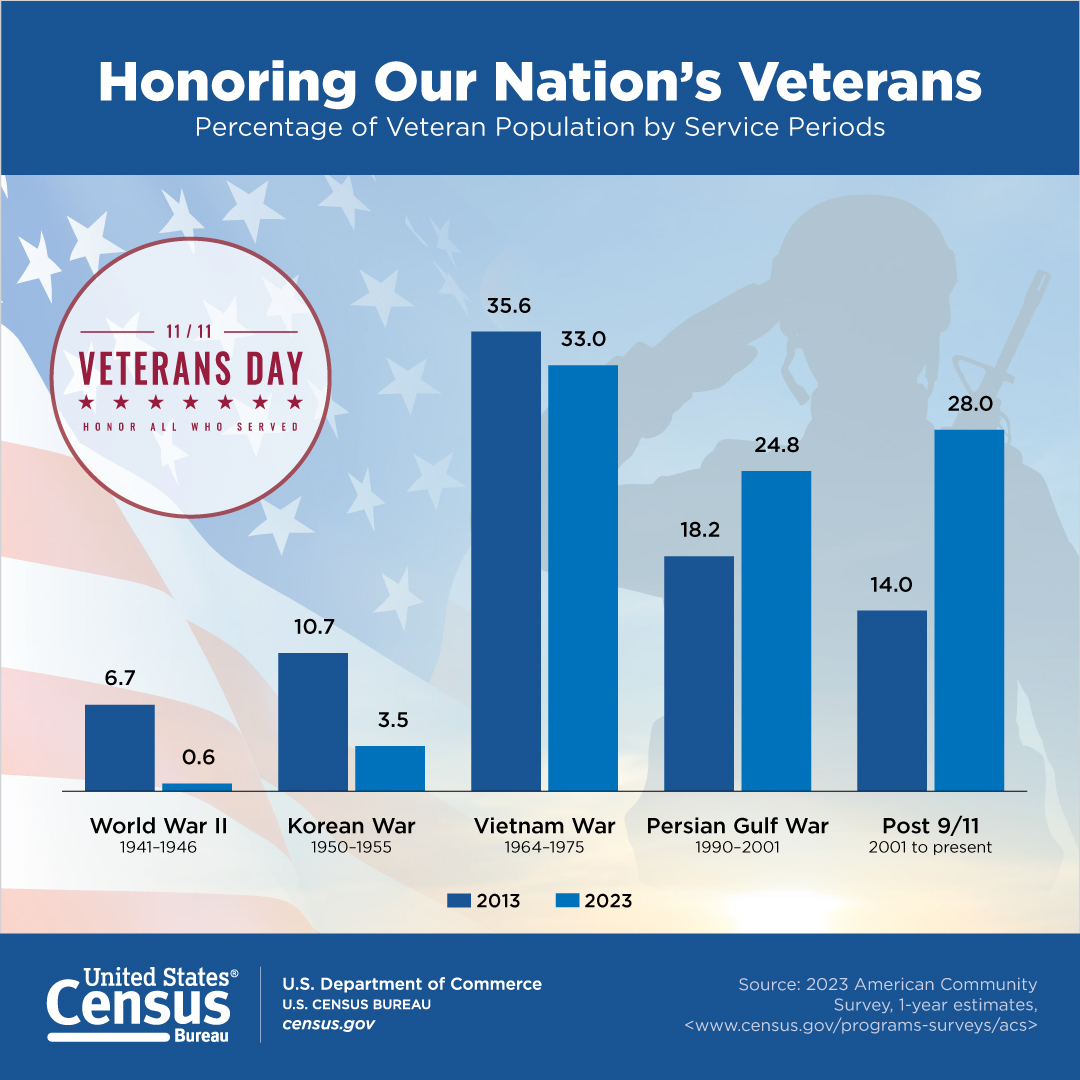Congress passed a resolution in 1926 making it an annual observance, and it became a national holiday in 1938.
Source: U.S. Census Bureau
Veterans Day originated as “Armistice Day” on Nov. 11, 1919, the first anniversary of the end of World War I. Congress passed a resolution in 1926 making it an annual observance, and it became a national holiday in 1938. Sixteen years later, then-President Dwight D. Eisenhower signed legislation changing the name to Veterans Day to honor all those who served their country during war or peacetime. On this day, the nation honors military veterans — living and dead — with parades and other observances across the country and a ceremony at the Tomb of the Unknown Soldier at Arlington National Cemetery in Virginia.

The following facts are made possible by the invaluable responses to U.S. Census Bureau surveys. We appreciate the public’s cooperation as we continuously measure America’s people, places and economy.
Veteran Population
Did You Know?
15.8 million
The number of military veterans in the United States in 2023, representing 6.1% of the total civilian population age 18 and over.

1.7 million
The number of female veterans in the United States in 2023, representing 10.9% of the total veteran population.
0.6%
The share of veterans in 2023 who served during World War II. Additionally, 3.5% of veterans served during the Korean War; 33.0% during the Vietnam War; 24.8% during the Persian Gulf War; and 28.0% during the Post-9/11 period (September 2001 to present).
8.6%
The percentage of veterans in 2023 who were Hispanic or Latino (of any race). Additionally, 72.2% of veterans were White alone (not Hispanic or Latino); 12.6% Black or African American alone; 2.0% Asian American alone; 0.8% American Indian or Alaska Native alone; 0.2% Native Hawaiian or Other Pacific Islander alone; and 2.8% Some Other Race alone. The percentages include only those who reported a single race.
27.9%
The share of veterans 75 and older in 2023. At the other end of the age spectrum, 8.3% of veterans were younger than age 35.
Source:
More on Veterans
This detailed profile of the U.S. veteran population in 2023 includes data for:
- Period of service.
- Demographics (age, sex, race and Hispanic or Latino origin).
- Median income.
- Educational attainment
- Employment status.
- Poverty status.
- Disability status.
Source:









![“Seven Nights of Lights and Luminarias” Among Most Read Articles in 2024 [#7]](https://lascrucesdigest.com/wp-content/uploads/2024/12/Luminarias-Old-Town-dm-1000x500_4F39B06A-5056-A36A-06831FDB1E06DF9C_4f3c202e-5056-a36a-0667e4166bf66da1.jpg)